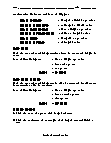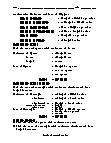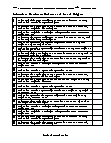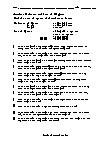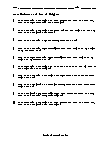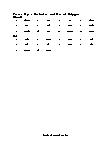Perimeter and the Area of Polygons Worksheets
How to Find the Perimeter and Area of Polygons? Calculating the area and perimeter of the polygon can be as simple as finding the area of a square or can be as complex as figuring the same for an eleven-sided figure. However, below we have given some tips to help you find out the area and perimeter of a polygon. Finding the Area of a Polygon - If you are given a triangle as the polygon for finding the area, then use the formula: A = 1/2 x base x height For example, if you are given a triangle of base 20 and height 10 plug in the values in the formula and find out the area of the triangle. A = 1/2 x base x height, A = 1/2 x 10 x 8, A = 40 cm. If you are given a polygon with all of its four sides of equal measurements, then use the formula: A = s x s OR A = s2. For example, the square has its sides of 5 cm measurements, plug in the value in the formula: A = s x s OR A = s2, A = 5 x 5 OR A = 52, A = 25 cm2. If the given polygon is a rectangle, then use the formula: A = base x height For example, if the base of the rectangle measures 3 cm ad the height is 4 cm; putting the value in the formula: A = base x height, A = 3 x 4, A = 12 cm. Finding the Perimeter of the Polygons - If you are given a triangle as the polygon for finding the perimeter, then use the formula: P = a + b + c. Where a, b, and c define the three sides of the triangles. For example, you are given sides as 3, 4, and 5. Then putting these values in the formula: P = 3 + 4 + 5, P = 12 cm. If you are given square as the polygon, then for finding the perimeter you will use the formula: P = 4 x a Where a is the length of the sides of a square. For instance, you have a square of sides 4 cm. then putting the values in the formula: P = 4 x a, P = 4 x 4, P = 16 cm. In case you get rectangle as the polygon to find out the perimeter, then we will use the formula: P = 2 (l + w). Where L defines the length and w defines the width of the rectangle. If you have 4 as length and 5 as the width of the rectangle, then putting the values in the formula: P = 2 (4 + 5), P = 2(9), P = 18 cm.
-
Basic Lesson
Guides students through determining the perimeter & area of polygons by using various equations. Find the area of parallelogram whose base is 15 cm and height is 6 cm.
View worksheet -
Independent Practice 1
A really great activity for allowing students to understand the concepts of the Perimeter & Area of Polygons. Find the area of square with perimeter of 80 cm. If the base of a parallelogram is 61 m and the area is 645 m2, what is the height of the parallelogram?
View worksheet -
Independent Practice 2
Students determine the Perimeter & Area of Polygons in 20 assorted problems. The answers can be found below.
View worksheet -
Homework Worksheet
Students are provided with 12 problems to achieve the concepts of Perimeter & Area of Polygons.
View worksheet -
Skill Quiz
This tests the students ability to understand Perimeter & Area of Polygons.
View worksheet
Here's a useful; trick-
Perimeter:
The word rim will help you remember that perimeter measures the distance
around the rim of an object.
